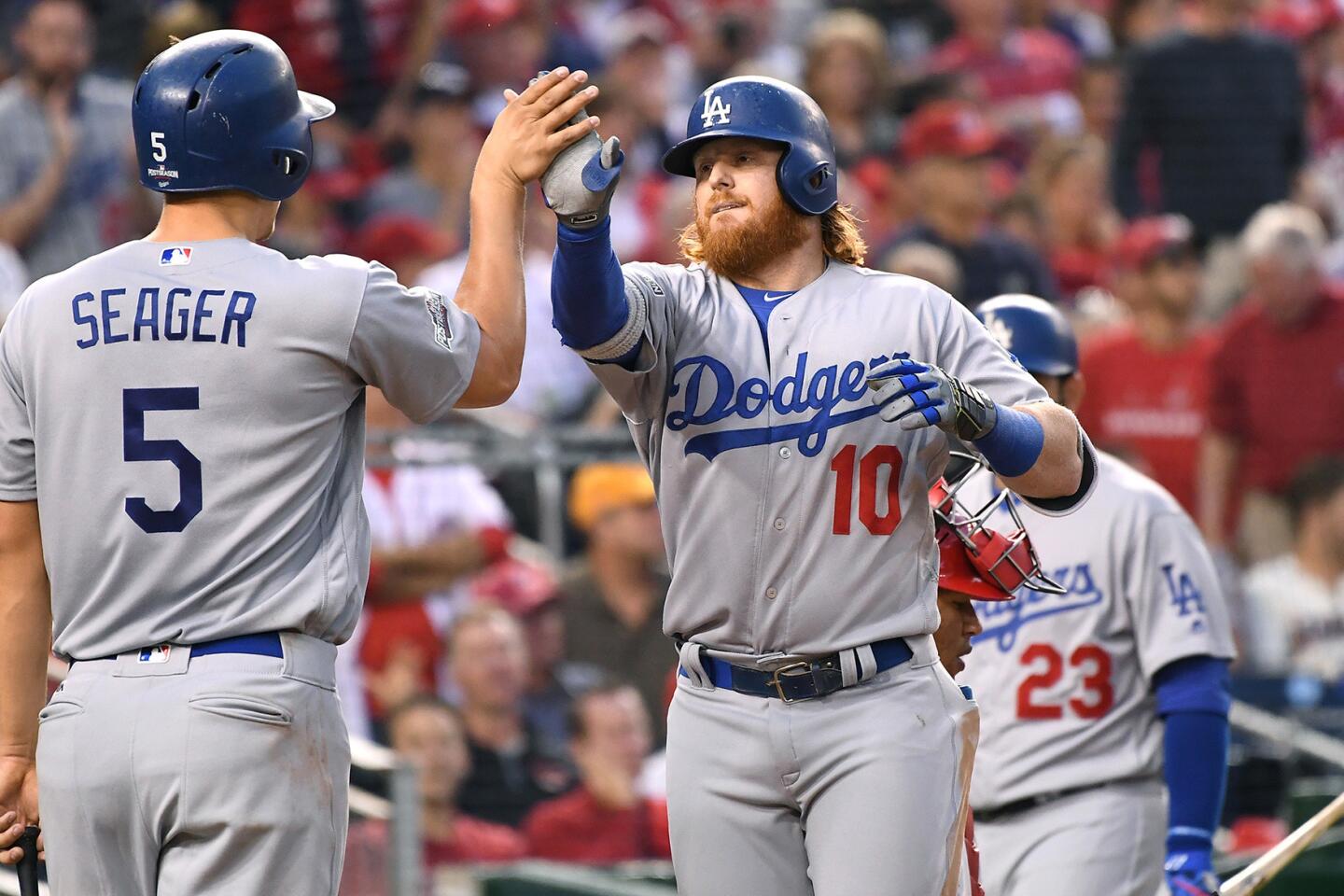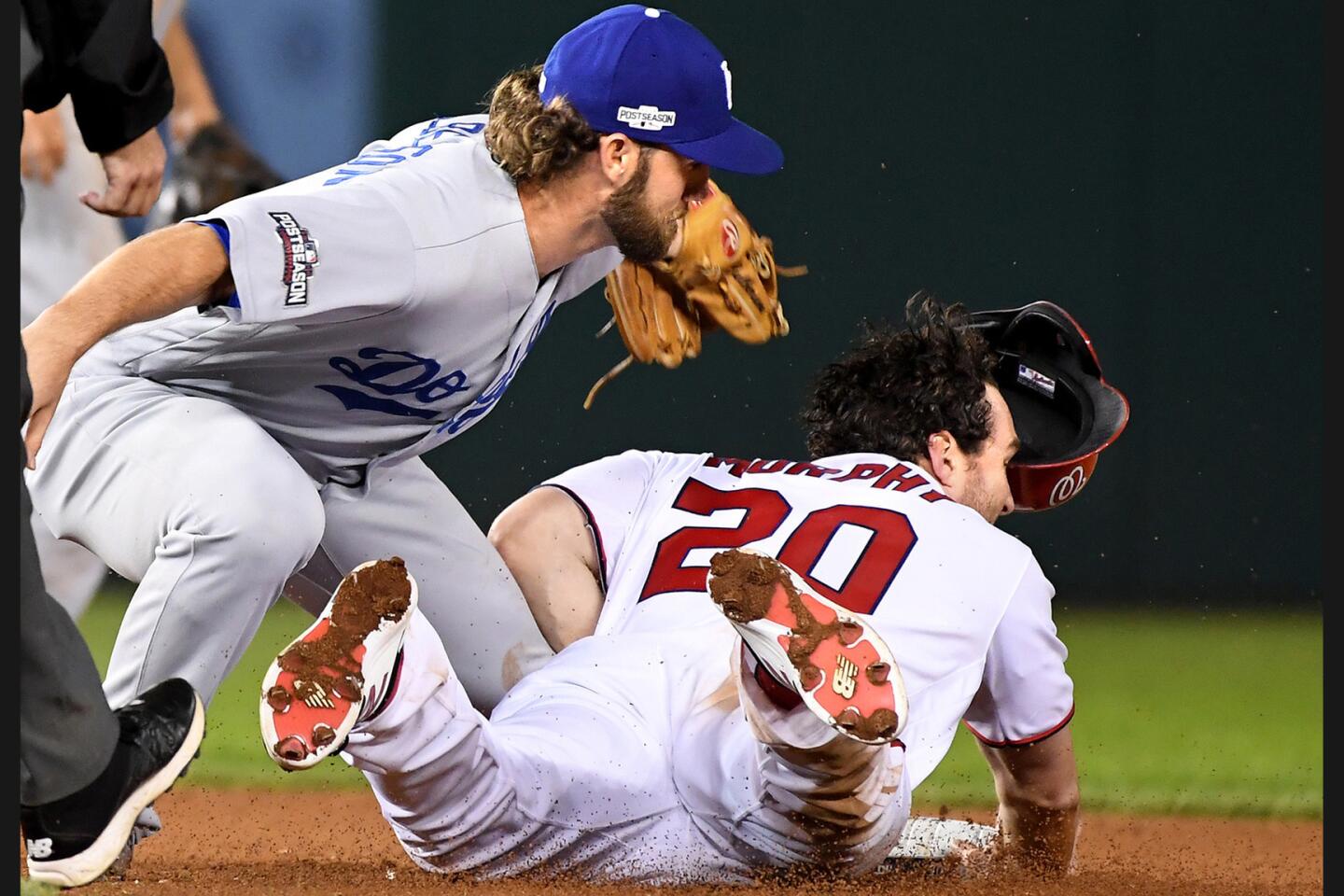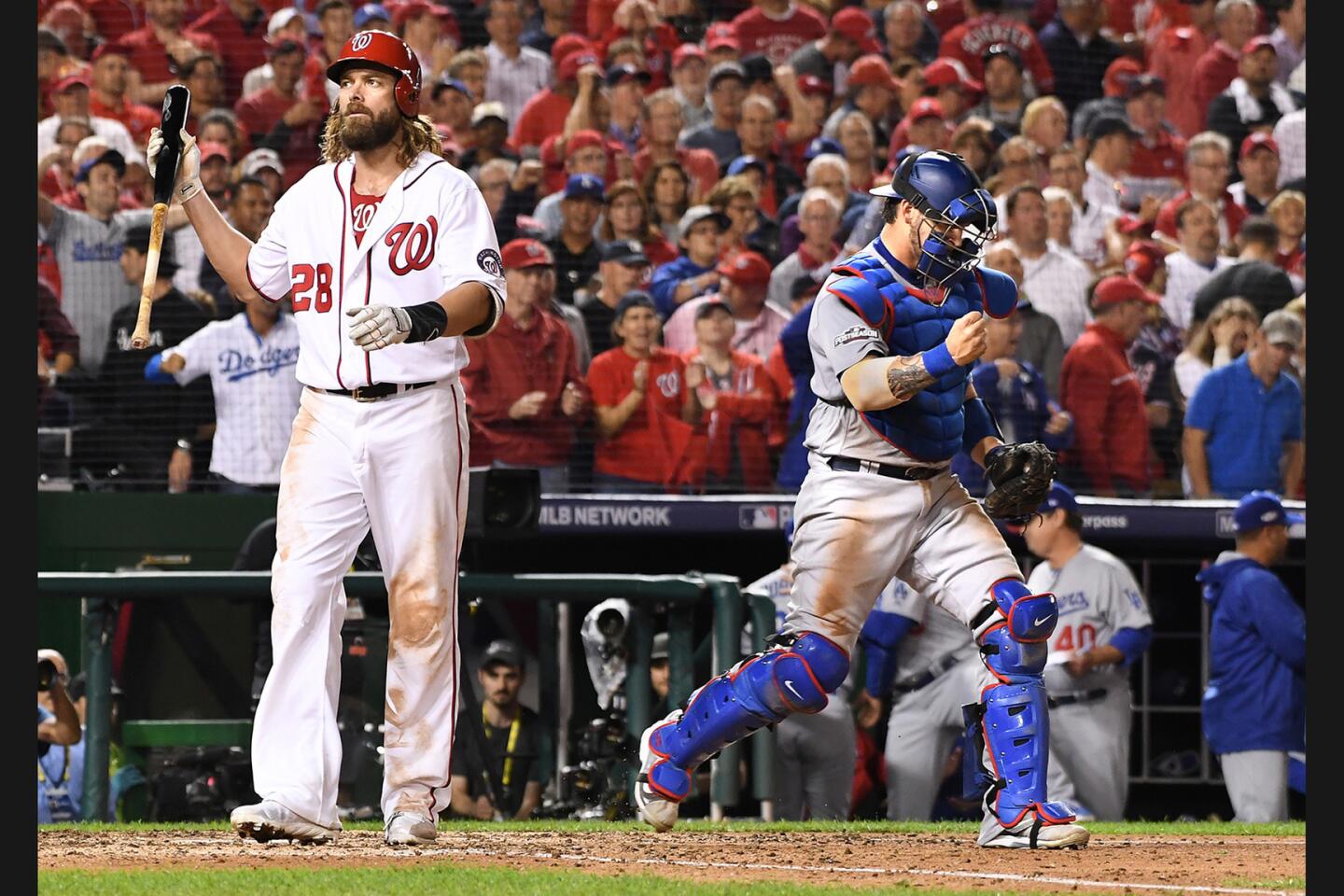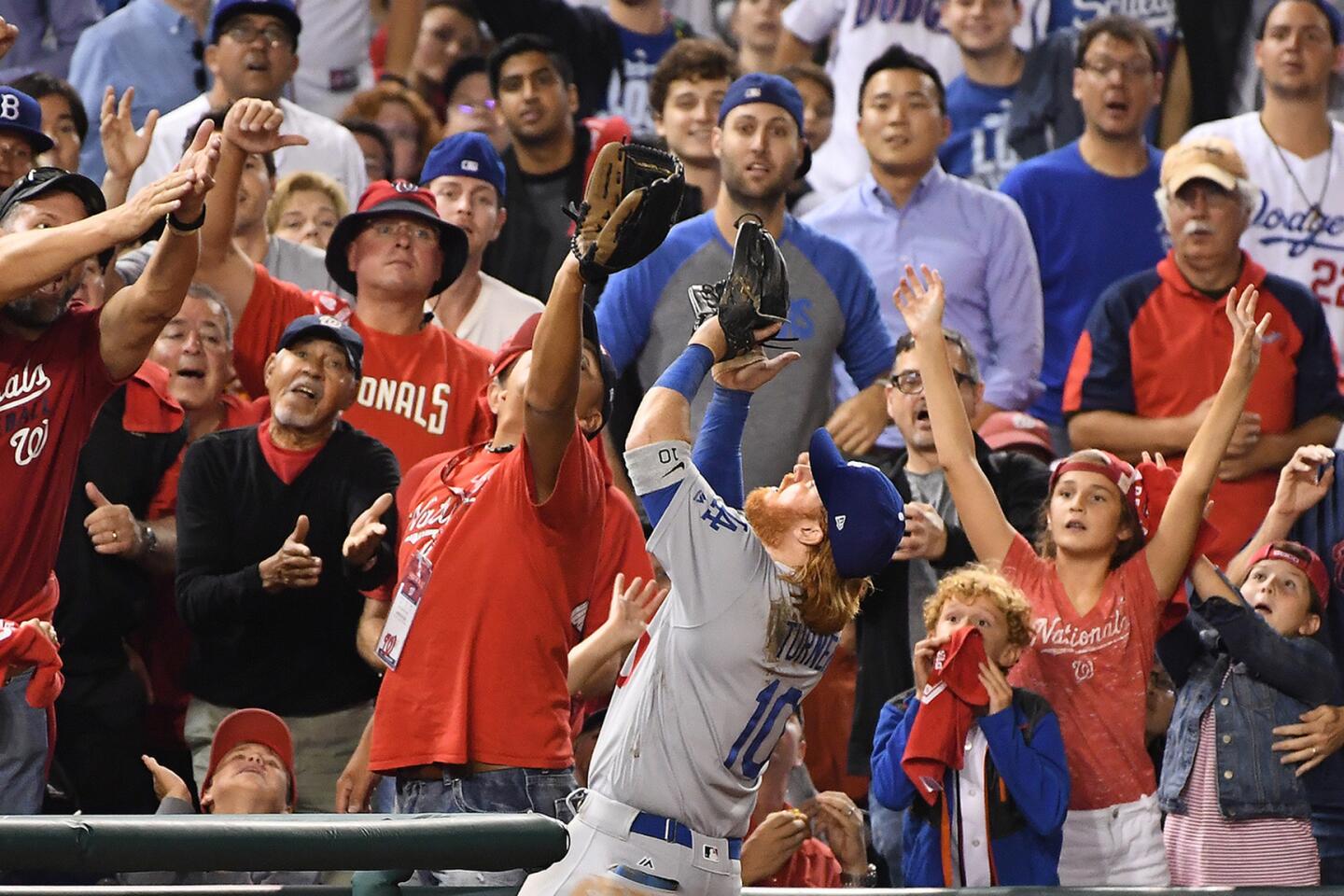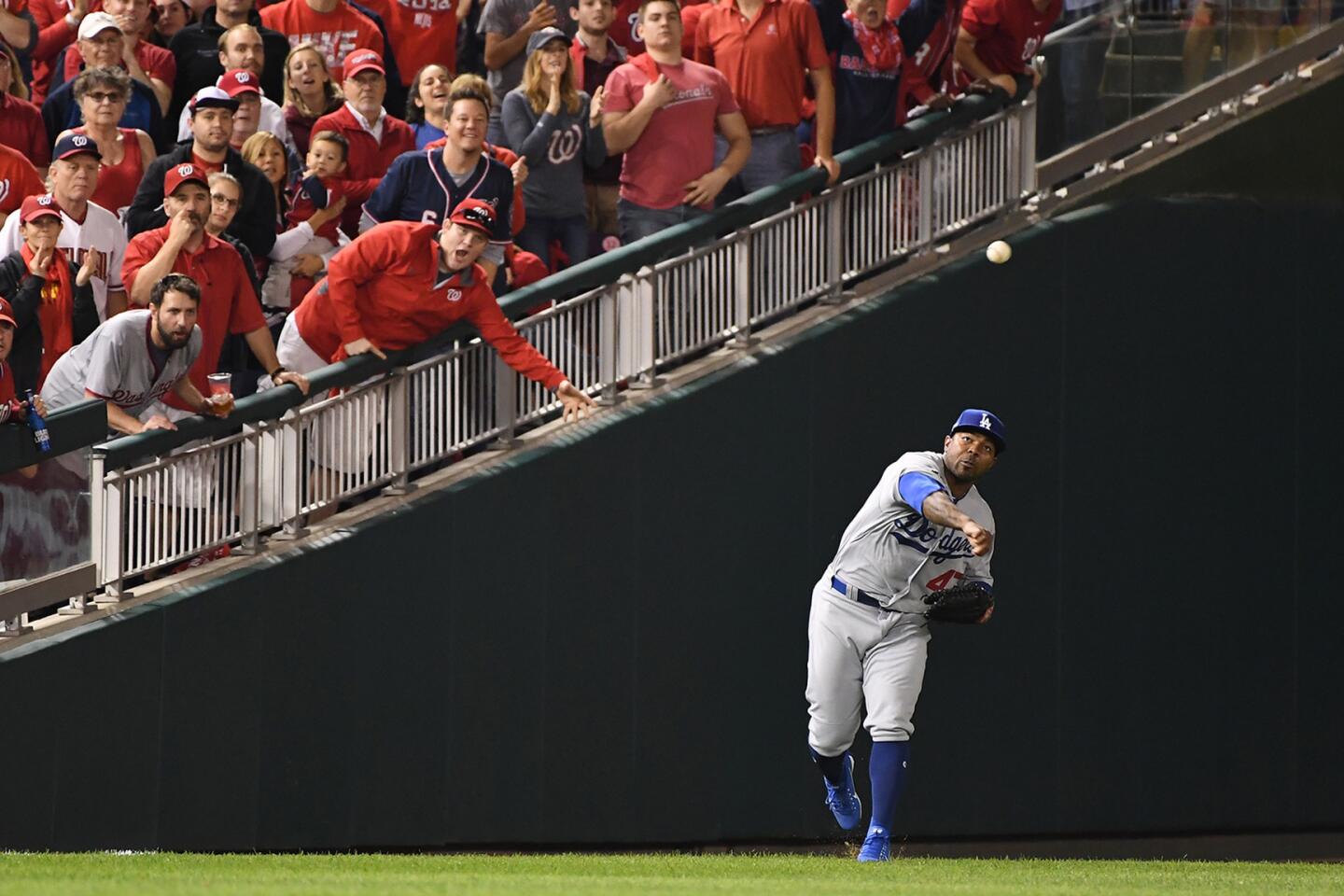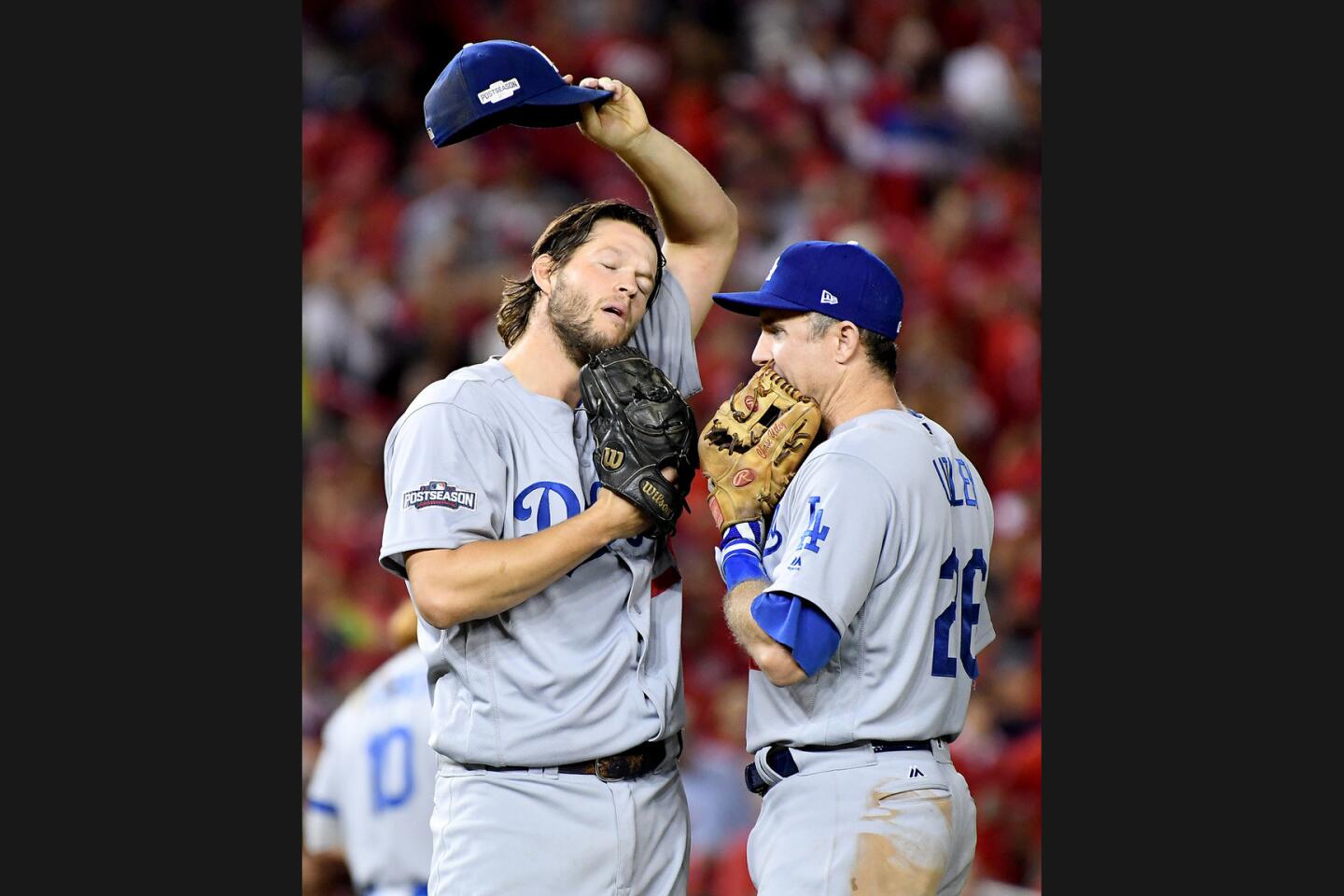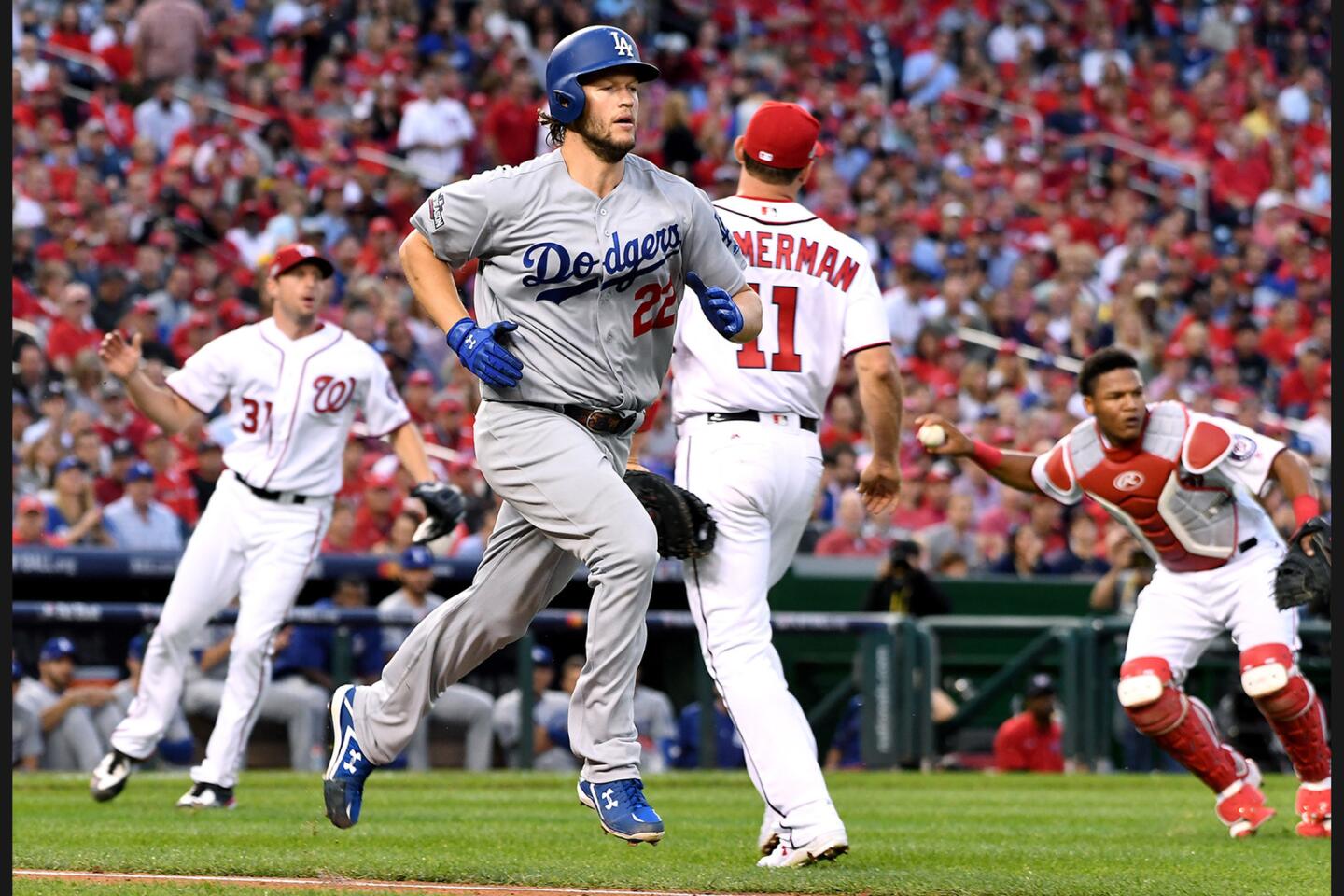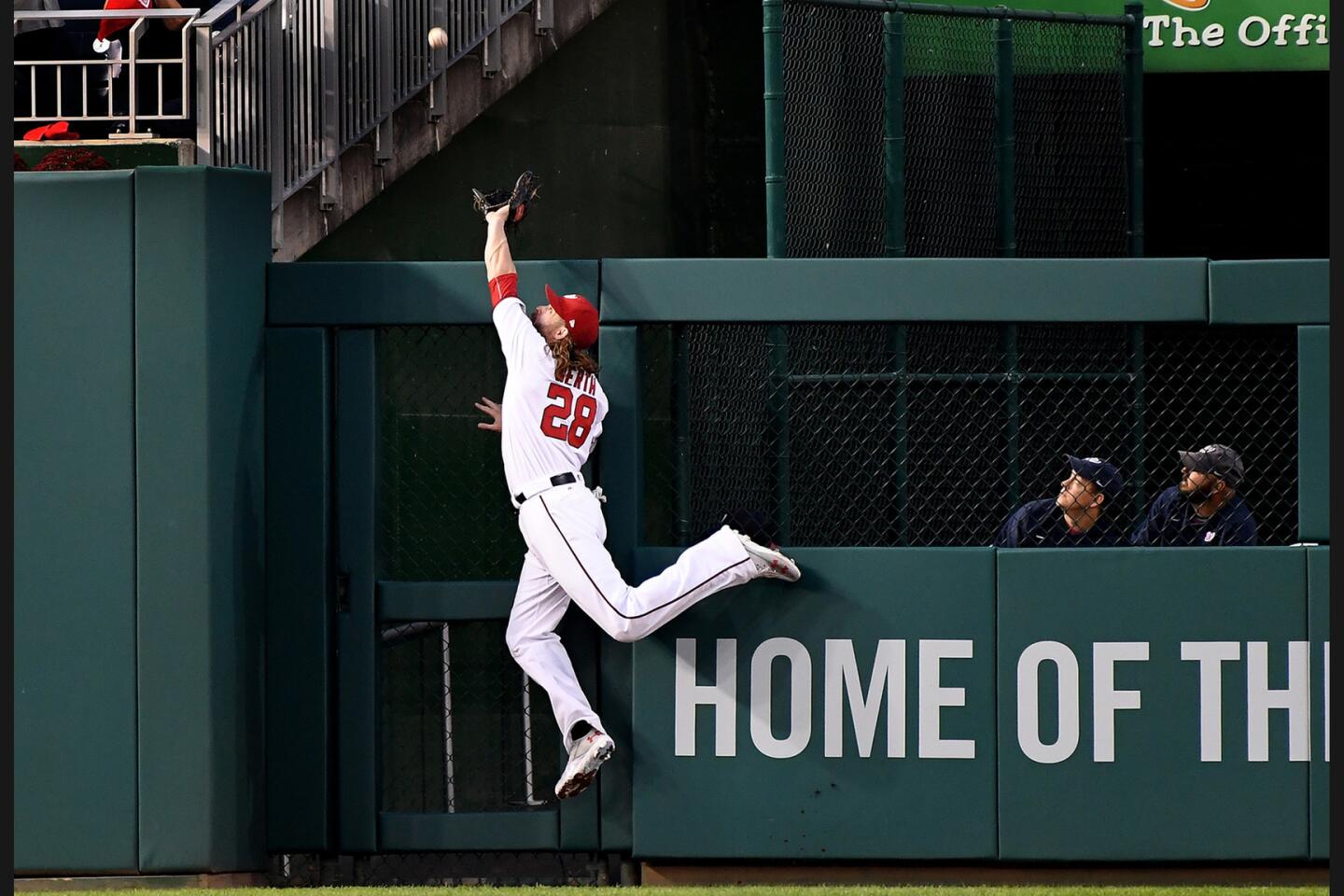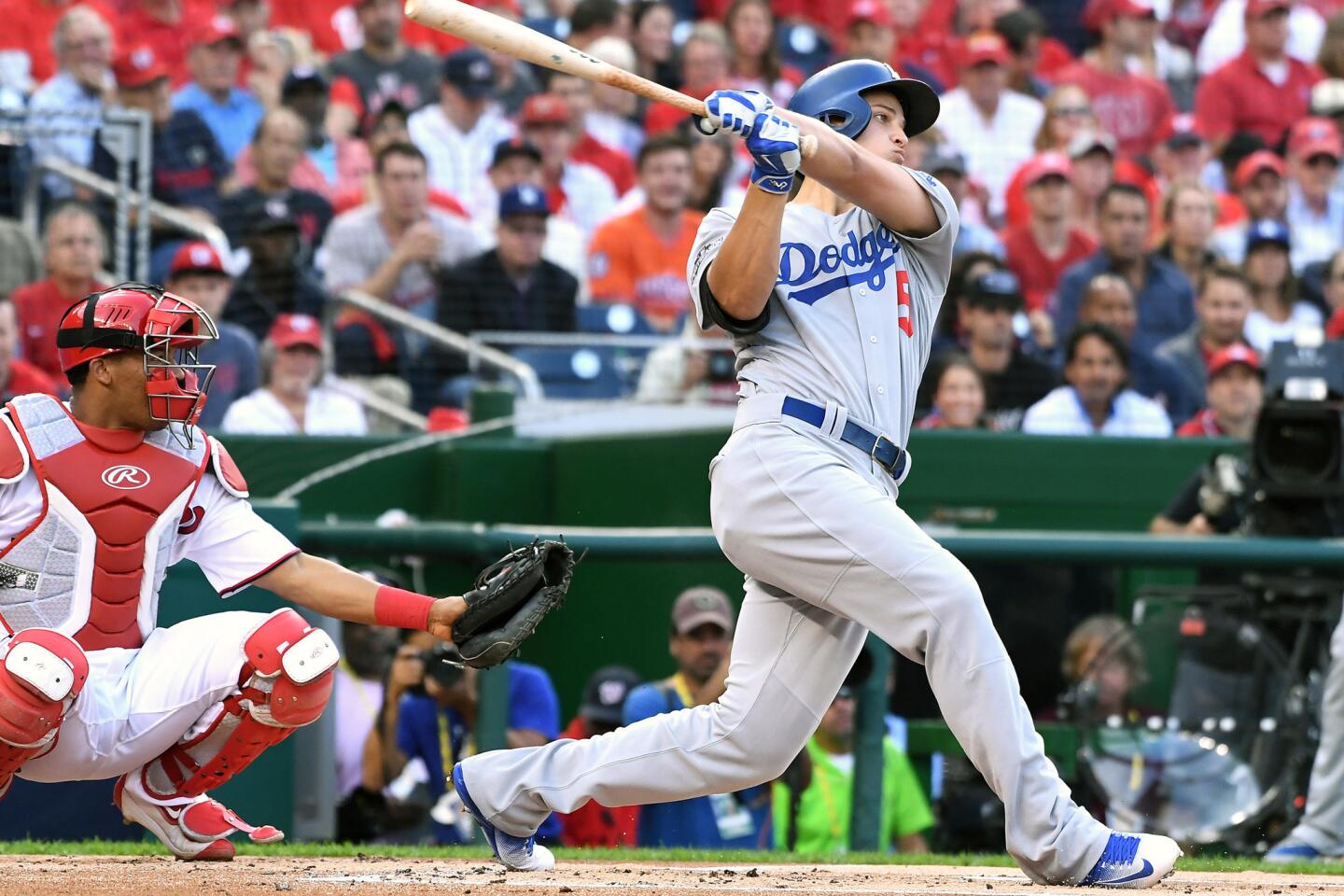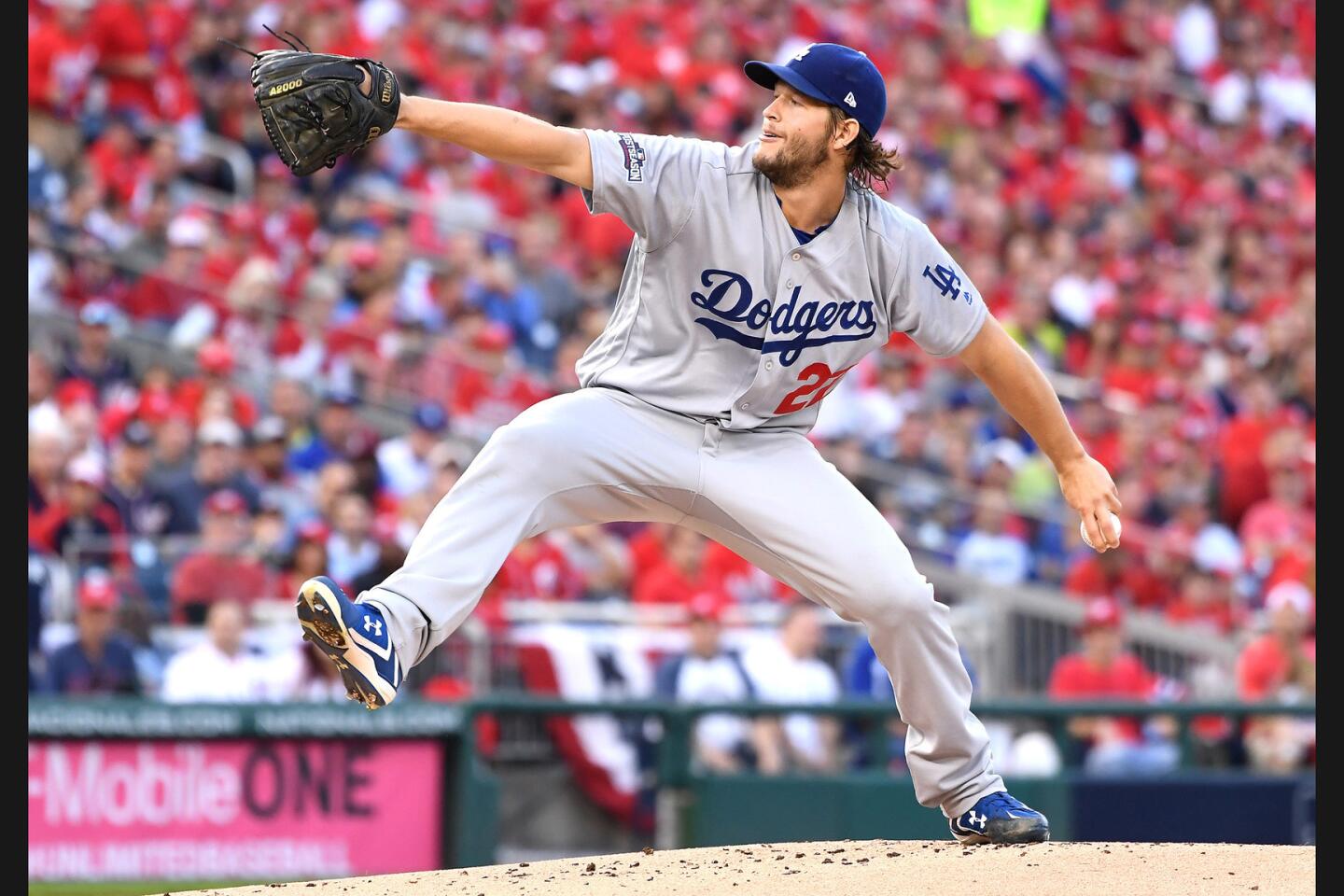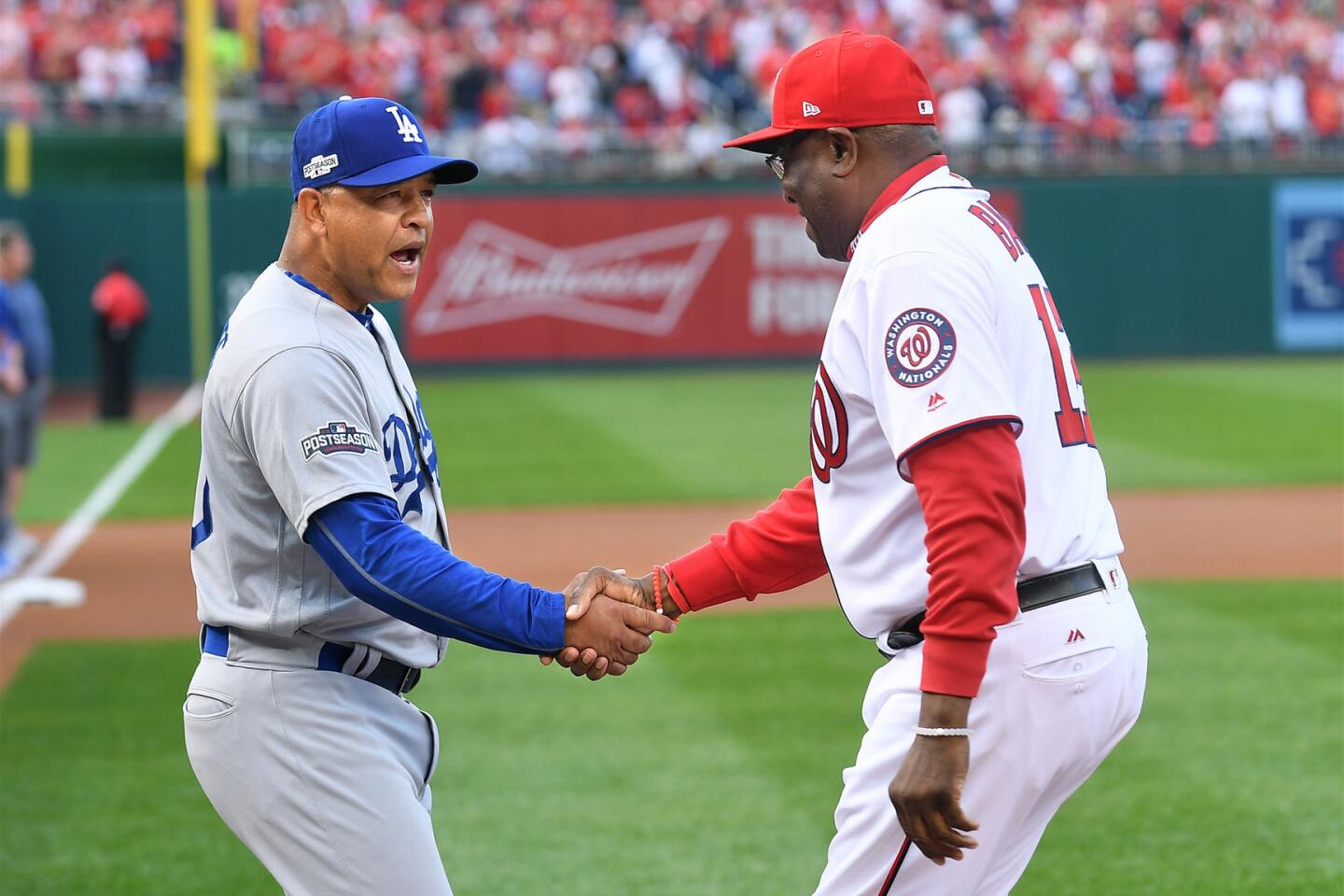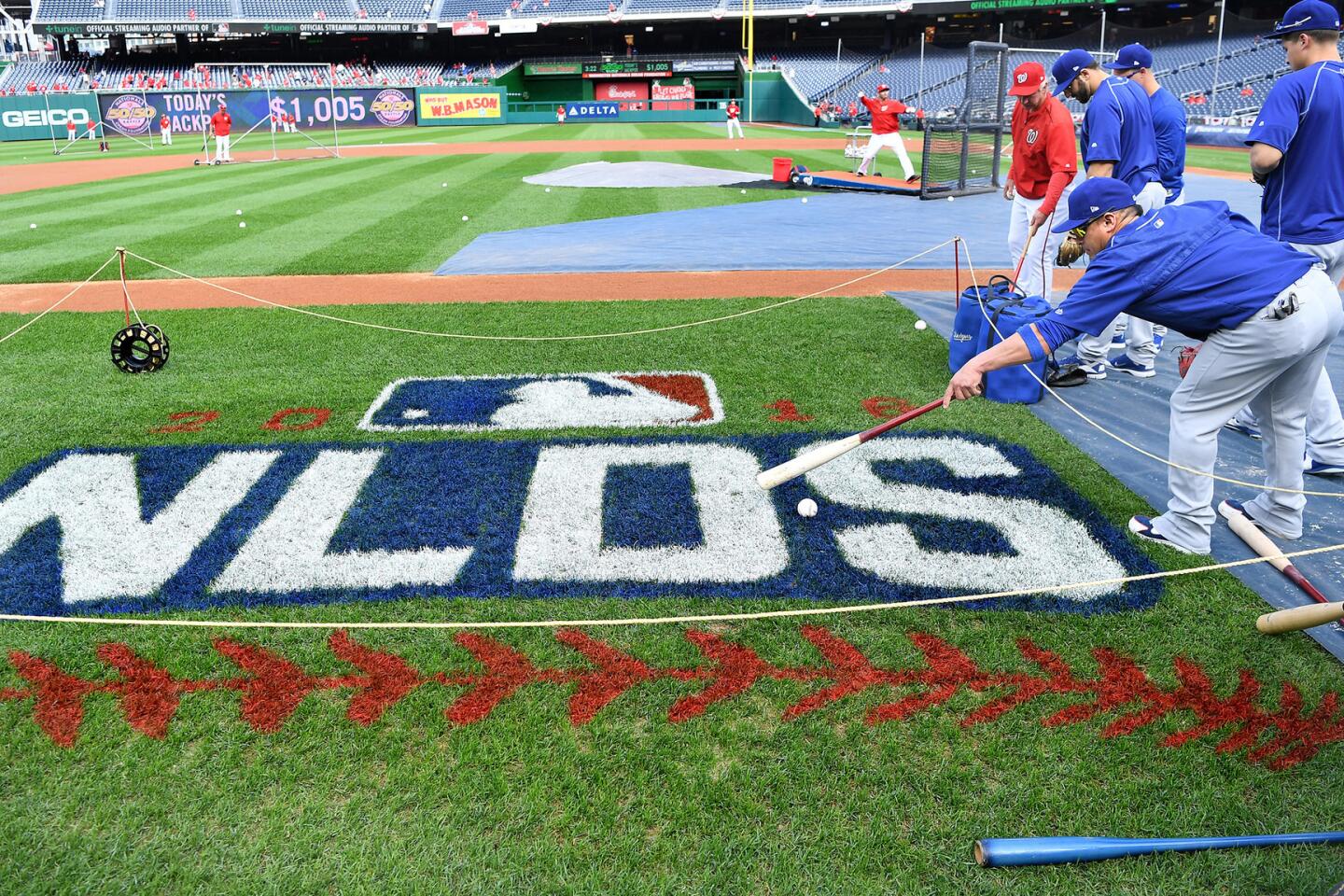Dodgers’ Corey Seager, Justin Turner get the last word by swinging at the first pitch in Game 1 against Nationals

Dodgers shortstop Corey Seager said the team could take a deep breath after a 4-3 victory over the Nationals in Game 1 of the NLDS.
- Share via
Reporting from Washington, D.C. — Not 10 minutes before Friday’s first pitch in the National League division series, Justin Turner and Chase Utley stretched along Nationals Park’s left-field foul line. Curious, Turner queried the Dodgers’ leadoff hitter about his plan against Washington ace Max Scherzer.
“I’m not going to swing at the first pitch, if that’s what you’re asking,” Utley told him. “But if I get to 1-0, I’m going to be aggressive.”
Utley did as promised. Without flinching, he watched a fastball travel past him, through the heart of the strike zone. He unleashed a swing on the third pitch, fouling it off, and struck out on five pitches.
Corey Seager moved from the on-deck circle to the batter’s box, and immediately walloped Scherzer’s first-pitch fastball 430 feet to straightaway center for a home run. In so doing, both Dodgers hitters acted true to form.
“Ever since Corey has been up here, even last year, he’s been a notorious first-ball hitter, and he’s ready to hit it from right out of the gates,” Turner said. “That’s what’s special about him. A lot of guys can be timid on the first pitch. He’s committed and he’s ready from 0-and-0 every time.
“He’s not always getting hits, but usually when they throw a ball in the zone he’s putting a really good swing on it. He ends up getting himself into good situations, even later in the counts, by being aggressive early.”
This season, Seager swung at 43% of first pitches, nearly 300 times in his 687 plate appearances. He put them into play 112 times, more than anyone else in the National League, and logged a 1.000 on-base-plus-slugging percentage on them, including 16 of his 71 extra-base hits.
“It’s a simple approach: Just be ready for the first one,” Seager said. “Be ready for all of them.”
Scherzer got Friday’s fastball where he wanted it vertically, at Seager’s belt. But he wanted it to bore in on the inside corner. Instead, it traveled at 97 mph into the outer third of the strike zone.
“That’s why he was able to get his arms extended and hit it a mile,” Scherzer said.
Turner followed. He typically offers at first pitches at a lesser rate than the major league average of 28.6%. But he emulated Seager and swung at another 97-mph fastball. He fouled it off, then was hit by the next pitch he saw.
When he next approached the plate, in the third inning, Scherzer threw him a first-pitch curveball, likely recalling the events of the previous at-bat. It hung. Turner deposited it beyond the left-field fence for the decisive two-run home run, giving the Dodgers a 4-0 lead in a game they would win 4-3.
“I think the first time through the lineup as a team, we were pretty aggressive,” Turner said. “That kind of affected the way Max pitched to us. The second time through, he went through all the secondary stuff even more than we saw him do on tape.”
And so Seager’s persistent strategy spread, for one night, to the team he buttressed for so much of his rookie season.
“Evidently, everybody knows he’s going to throw a lot of strikes and a lot of early strikes,” Nationals Manager Dusty Baker said of Scherzer, noting Seager’s approach. “Because they attacked him in his last start like that. But then as soon as he started working with his breaking ball and changeup, he was the Max we know.
“But he made a mistake to a very good hitter. He hung a curveball.”
pedro.moura@latimes.com
Twitter: @pedromoura
More to Read
Are you a true-blue fan?
Get our Dodgers Dugout newsletter for insights, news and much more.
You may occasionally receive promotional content from the Los Angeles Times.
